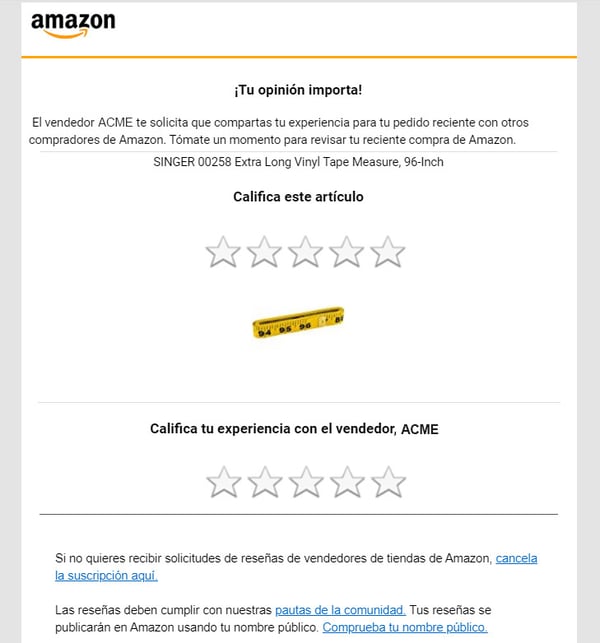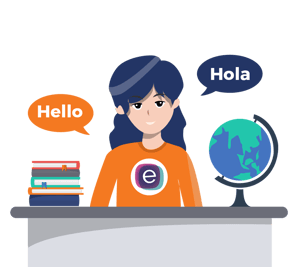Originally published on March 6, 2020, updated January 4, 2024
Menu
Join Our Email List
- Receive our monthly newsletter.
- Stay up to date on Amazon policies.
- Get tips to grow your business.
There is no shortcut when it comes to translating content for Amazon. While Amazon seems to be a fan of machine-based translations, the truth is that these won’t cut it if you want your listings to succeed in other marketplaces.
While everyone is aware of the global opportunity on Amazon, very few non-native companies that are players in international marketplaces are actually doing a good job.
Content for Amazon needs to be written with SEO at the forefront of the mind. Focus on keyword-rich content that appeals to the customer. Keywords will help the customers find the product and compelling content will convert that click into a sale. Many brands are aware of these optimization factors, but when it comes to translation they get missed. Major keywords are not captured and the content is no longer coherent and may not even make sense to a native speaker.
Keywords will help the customers find the product and compelling content will convert that click into a sale. Many brands are aware of these optimization factors, but when it comes to translation they get missed.
When finding a company or individual to translate copy for you, here are three things to look for.
One important note is that keywords don’t always translate well. In some languages, there might be multiple ways to describe an item that are different than in English.
If the translator only translates one keyword and doesn’t do any work around identifying similar keywords, your products might not be discovered by customers as won't appear in a search for major keywords for that item.
There are many tools out there that can help you identify keywords in multiple languages. I recommend that the native speaker is the one using the tool as they will be able to weave out any irrelevant terms and use the most appropriate seed keywords.
Human translators can translate your (hopefully fully optimized) listing text in the correct context every time, whereas machine-based translation uses the most likely and popular terms within a certain phrase. Do you want your translation and sales to rely on probability? Probably not.
For example, you may be selling nutritional supplements targeted to senior citizens. Would you want the word “elderly” replaced with “ancient” or “over the hill?” While it’s clear to a person these are not the correct synonyms to sell a product, a machine doesn't understand the context.
You need copy written in an accurate context for it to convert for your customers. Human translators who are native speakers will have the language skills and understanding to translate correctly and in a way that makes sense for marketing copy.
Speaking a specific language or being a native speaker doesn’t automatically result in a qualified translator. Translating is a lot more complex. You need to understand the context of the whole text and ensure the content is being interpreted correctly with the appropriate use of words. It is not about translating individual words, it is about translating the full text. It is recommended that you use a certified native translator.
When communicating with buyers in their native languages you'll want to be sure to use a professional translation to avoid any miscommunication.

If you are sending a request for a product review or seller feedback with FeedbackFive, you can use message templates that are professionally translated. Also, Amazon's Request a Review feature automatically translates your request to the recipient's preferred language.Colleen Quattlebaum
Here is an example of an Amazon Request a Review email in Spanish:

These professionally translated options (available in Dutch, French, German, Italian, Polish, Portuguese, Spanish, Swedish, and Turkish) are very useful, but unfortunately, there is no easy international template for your product listings. That's where a native speaker who understands the nuances of the market can benefit your business.
Languages are complex and many words can have different meanings depending on the context. Some text may not even translate well into that language and need to be completely adjusted to make sense.
It is not just about a customer being able to understand the text. Rather, the copy needs to appeal to them to make them want to make a purchase. When translating, make sure your translator is not only translating the content but also localizing it.
 Culture matters when it comes to translation. At eCommerce Nurse, we use an SEO-based approach. The product listing content we write will contain a wide list of well-researched keywords to pull in organic search results. These terms cannot simply be replaced and translated word for word. Even between English-speaking countries like the UK and the US, we have to localize content for spelling, grammar, and context.
Culture matters when it comes to translation. At eCommerce Nurse, we use an SEO-based approach. The product listing content we write will contain a wide list of well-researched keywords to pull in organic search results. These terms cannot simply be replaced and translated word for word. Even between English-speaking countries like the UK and the US, we have to localize content for spelling, grammar, and context.
For example, a “vest” in the UK refers to an undershirt, while a “vest” in the US refers to an outerwear layer. If these differences are not properly accounted for, we will completely miss our competition and target audience. And if two English-speaking countries are this different, you can imagine how complex this becomes with two completely different languages.
We also have to take into account other cultural aspects, such as offensive or derogatory terms, political issues, figurative and literal language, and much more. Machine-based translations can’t perform localization, whereas trained human translators can.
Worldwide, there are now more than 350 million product listings on Amazon, making it more important than ever to stand out from the crowd. Machine-based translation is not going to improve your listings or create a professional image that elevates your brand above competitors.
If you have ever seen sellers using poor grammar, spelling, or weird phrasing, it is almost certainly a foreign listing that was translated without a genuine, certified translator. Shoppers are unlikely to purchase your items when a competitor is doing it better.
This means answering customer questions, correctly providing accurate and detailed product information, and establishing your business as a voice of authority and trust. By using professional translators, you can set your brand up for success to enjoy increased SEO, conversion, customer reviews, and ratings.
Machine-based translation is great for travel and leisure purposes. Use it for your vacation, by all means. But Google Translate is not ideal for a business setting. The fact is, machine-based translation is unlikely to be a good long-term strategy for your marketing or sales goals.
 Certified translators are not only native, bilingual speakers, they go through rigorous training and state-approved certification to acquire the necessary skills and techniques for accurate, high-quality translations. At eCommerce Nurse, all of our translators have certification and training in proven methods for SEO-relevant content plus advanced degrees in translation studies and eCommerce or Amazon experience. Learn more about our team of translators and how we can set you up for integrated success.
Certified translators are not only native, bilingual speakers, they go through rigorous training and state-approved certification to acquire the necessary skills and techniques for accurate, high-quality translations. At eCommerce Nurse, all of our translators have certification and training in proven methods for SEO-relevant content plus advanced degrees in translation studies and eCommerce or Amazon experience. Learn more about our team of translators and how we can set you up for integrated success.
Simple and free sounds pretty good, right? But while some businesses may think human translation will be very costly or require a long turnaround time, this is rarely the case. We recommend investigating all of your options before using a translation tool.
Using a machine-based translation can result in sloppy, unprofessional results. It can drain resources or money to correct mistakes, errors, and even combat legal issues. If the translation doesn’t result in your business achieving the desired sales goals and results, it’s not worth the cheap or free price you paid for it.
When thinking about your content, be sure to consider the full scope of the project. You may need content in many different languages, and you may need many different areas considered, such as Brand Stores, main image text, A+ pages, and more. This is an even better reason to use a professional, human translator and ensure your text conveys the proper message and is on-brand.
Machine-based translations can eat into your bottom line over time, especially when you’re focusing on international expansion. If you’re investing in the legal and logistical aspects of selling in other countries, professional translation ensures you’ll get it right the first time.
Originally published on March 6, 2020, updated January 4, 2024
This post is accurate as of the date of publication. Some features and information may have changed due to product updates or Amazon policy changes.
These Stories on International
14321 Winter Breeze Drive
Suite 121 Midlothian, VA 23113
Call us: 800-757-6840





Copyright© 2007-2025 eComEngine, LLC. All Rights Reserved. eComEngine®, FeedbackFive®, RestockPro®, and SellerPulse® are trademarks or registered trademarks of eComEngine, LLC. Amazon's trademark is used under license from Amazon.com, Inc. or its affiliates.
No Comments Yet
Let us know what you think